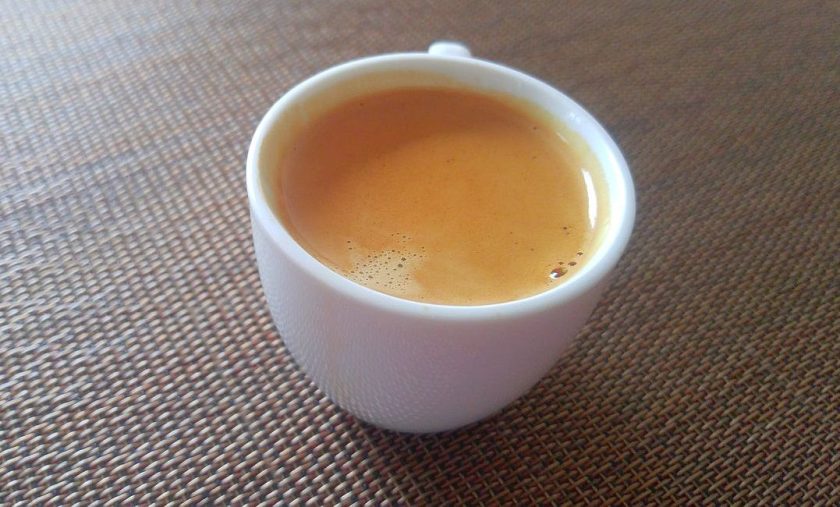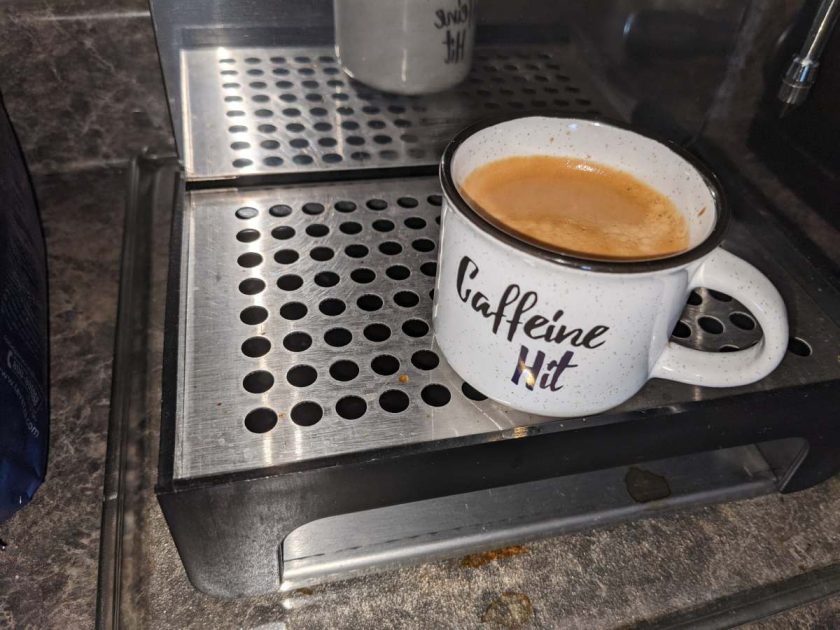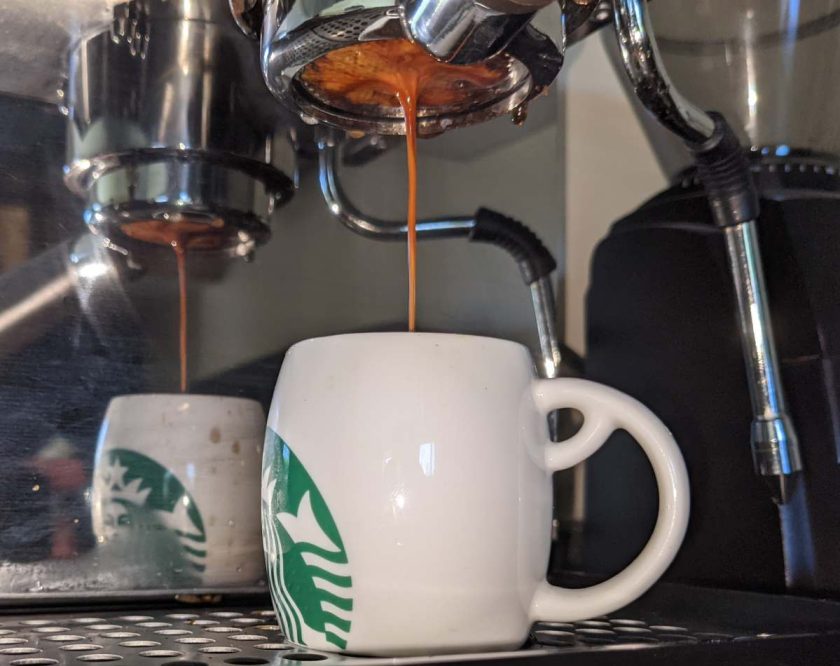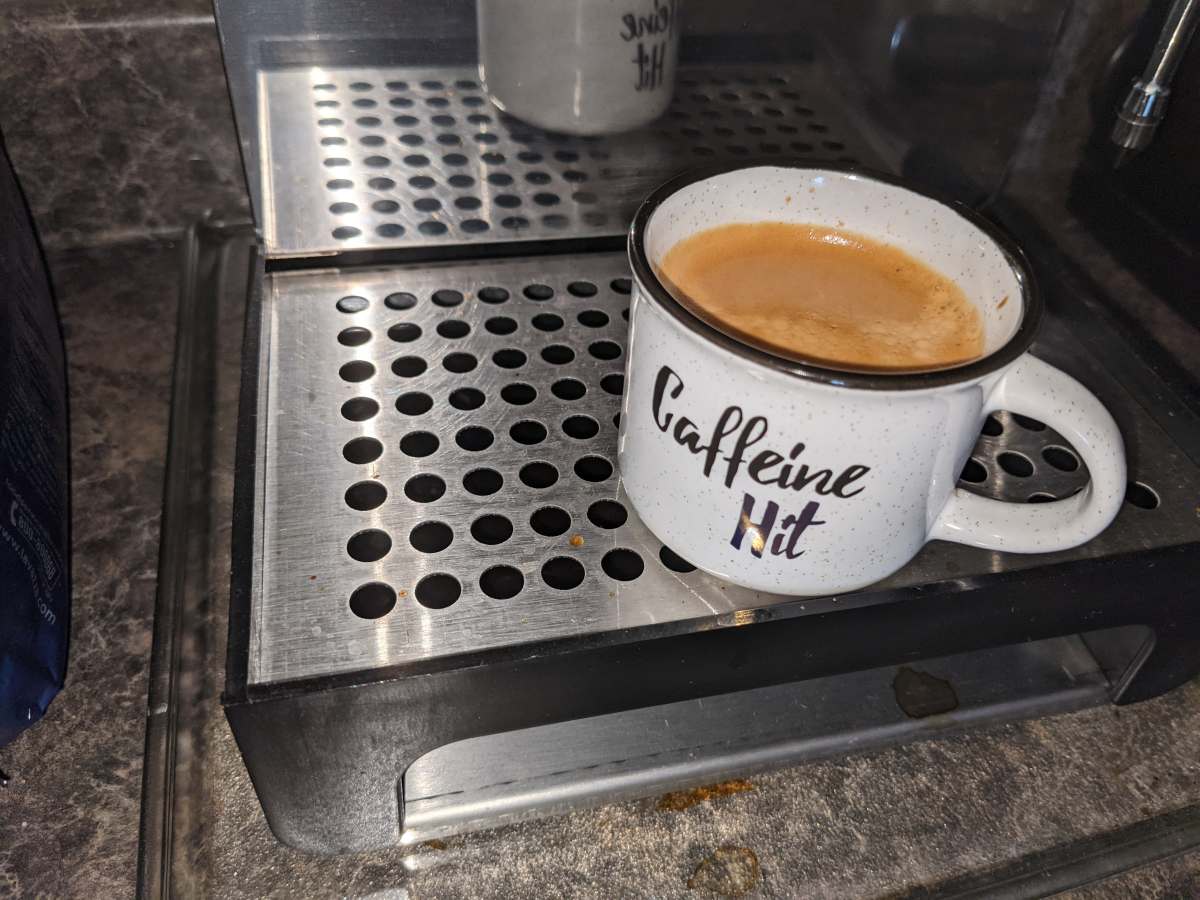You probably tried an espresso shot and wasn't impressed. Or maybe you heard your coffee snob friend passionately talking about his latest triple ristretto that he pulled. He would rank that as a “God Shot”. Now you are thinking “What Is So great about Espresso?”
If you tasted it and didn't like it, it's a legitimate question. If you never tried espresso, I suggest try one as soon as you finish reading this article. Make sure you get it from a good coffee shop, (Starbucks doesn't have great espresso). If you tasted espresso and didn't like it, chances are that you had a poorly made one, or it was not even an espresso.
We are going to show you in this post why people like espresso, and why coffee professionals treat this coffee drink as the king of coffees. This is not a brewing guide, for that, you would have to read our article on how to make espresso.

But let's see first what is espresso, because many times there are big confusions about this amazing coffee drink.
What Is Espresso
Espresso is a method of brewing coffee, and the result of this brewing method is a coffee beverage called espresso. Many times espresso is wrongly used to talk about strong coffee, or many times people think that espresso is a stronger coffee. This is not true.
While espresso is a strong coffee, (actually the strongest coffee of all brewing methods), it's not the strength that makes it an espresso. The brewing method determines if a coffee is espresso or not. People asked on Quora: “How can you make espresso in a coffee maker?” You cannot. Unless of course they meant an espresso maker, which is a type of coffee maker.
One great thing about espresso is that we extract the best compounds from the coffee grounds without extracting the bitter components. Unlike other brewing methods, with espresso we can extract more than 800 aromatic compounds found in roasted coffee without extracting the tannins. With almost all other brewing methods, the tannic acids will leach into the coffee brew, adding undesirable astringent and bitter flavors. We dedicated an article that explains in more details all of these: What Is Espresso? I recommend you take a read, if you need to understand this magical coffee drink.

What Is so Special About Espresso?
Espresso is special because of the special brewing method that pushes pressurized hot water through finely ground coffee to extract flavors and aromas that are not found in other coffees. The special brewing method creates a coffee drink that is appreciated for its unique and intense flavor profile. Knowing all the variables that can impact the taste and look of an espresso is vital if you aim to pull the perfect shot of espresso.
How “Can You Like” Espresso
If you had espresso before and you didn't like it, it's either you or the shot. Let me explain. The problem with “liking espresso” is two-fold. On one hand you have the quality of the espresso shot, which is the objective perception, on the other hand you have a subjective flavor perception.
The quality of the shot is determined by a perfect combination of great coffee beans, a good espresso machine, and a skillful barista. The Italians call this the three M's golden espresso rule. Miss one of the M's and the espresso is only average. The three M's are Miscela, Macchina and Mano. Miscela means the blend, Macchina means the espresso machine, and Mano means hand and refers to the barista's skills.
The subjective flavor perception is a combo of habit, and expectations. In a way this might be linked to the slight addiction we develop for coffee, but this is just a theory. The idea is that you are used to a coffee flavor, and you are pretty consistent with that flavor for months, even years, when you decide you need to try espresso. Your brain doesn't know this new flavor, and it doesn't think it's going to bring the energy kick that it expects. So the verdict: “This coffee sucks”.
For me, as a former barista this wasn't a problem, as I was always trying new coffees, new roasts, and new origins. But even for me, after my barista career, when I would change from a dark roast to a light, I would need a few days to adjust to the new taste.
The two subjective barriers to getting espresso are the serving size and the concentration. It's hard to get used to a drink that is a few times smaller than your regular cup. Because is so tiny, it packs a lot of flavor in a tiny cup. You drink a filter coffee, but you savor an espresso.
The message here is to give it a few tries, it might grow on you, unless the three M's are what your shot lacks. If espresso is not well prepared, the bad flavors from tannins are going to be amplified since it's such a concentrated coffee.
One more piece of advice. If you think that espresso is the perfect way to caffeinate faster or more efficient, then espresso is not for you. You'll only end up jittery and you will not enjoy your coffee. You can get a similar caffeination with any other coffee, just drink more of it. What is great about espresso are the flavors and the aroma. The caffeine kick is just an added benefit.
If you truly want to understand espresso, you will have to experience a few great shots, and the taste and aroma will convert you. You will need to get past your daily coffee routine, at the end of the day, coffee taste is just a habit.
If you don't like black coffee in general, just cheat a little. Espresso is great on its own, and you can add a small quantity of sugar, if you like. However, espresso is the base for many milk and coffee beverages, such as cappuccino and latte. Cheat your way into liking espresso and coffee.
I personally recommend the stronger espresso drinks, as you can still appreciate the espresso taste. Espresso con panna, cappuccino, or flat white are the best. When you get used to the taste, you can even try the espresso macchiato.
One more thing about drinking espresso. There is a lot of information on the Internet about drinking espresso like an Italian, and how Italians chug and espresso shot at the local cafe and they continue their day. Espresso must be savored, even if you drink it fast, you have to take a bit of time. Do not chug your espresso, please. Even if you are in a hurry, sip it. Take a it in a few sips if it's a single shot. The smaller sips will reveal the real taste of espresso. My double shots get cold many times, and they taste great.
How Is Espresso Brewing Different from other Brewing Methods?

Now that we know a little bit better what is espresso and what is not, let's see why it tastes the way it does, and what make it different from all other coffee types.
- Espresso is the only brewing method that uses a high-pressure brewing process. The pressure allows the extraction of some aromatic compounds that we cannot find in any other brewing method. Some of these compounds are volatile coffee oils that dissipate at higher temperatures, or get trapped in filters.
- Espresso has the shortest brewing time. A shot is pulled for 20 to 25 seconds. This short brew time ensures that tannic acids are not extracted from the coffee grounds. Compounds in coffee are extracted in sequence, and the good news is that bitter compounds take longer to dissolve in water. By keeping it short we avoid getting these into our cup. More about espresso extraction, if you want some geeky facts.
- Caramelized Aftertaste. The emulsified coffee oils in espresso activate the taste receptors at the back of your tongue. The aromatic compounds in your coffee are released for 20 minutes or more. Even though we drink a shot in under a minute, the aftertaste is the longest.
- Espresso is the base for espresso drinks. Because of its strong flavor, and concentration, almost all coffee drinks in a coffee shop are prepared with espresso. Macchiato, cappuccino, flat white, latte, are made primarily with steamed milk and a shot or two of espresso.
- Crema. Crema is probably the most distinctive feature of an espresso. Although there is a little debate whether crema brings any flavor contributions to the shot, the consensus is that crema is the most distinctive feature of an espresso and is a sign of a quality shot. Crema is an emulsion of coffee oils and water. This emulsion is a layer of foamy coffee on top of the espresso shot called crema. I personally love crema, and I think it brings its own flavor contribution to the shot.
- Espresso is a concentrated coffee, while not overpowered by tannic acids. A similar strength drip coffee tastes bad. The longer we expose coffee to hot water, the higher the chances to extract undesirable compounds that will add bitterness to the coffee.
- Grind Size – Second finest grind size, only after Turkish coffee. We can afford to grind finer and avoid over-extraction because of the short brewing time. The fine grind size increases extraction yield without extracting tannins.
- The smallest coffee beverage in volume. Along with Turkish coffee, it is the smallest serving size. The serving size is part of the appeal, as it packs more flavor into a tiny beverage. To compensate for that, espresso lovers have invented larger drinks, such as the triple shot. Pulling a triple shot of espresso is different than preparing a normal, or a double espresso shot.
Enough with the technical details, if these interest you you can check our article about espresso extraction, which goes into the details of all coffee variables and how they affect your cup.
For a better understanding of this coffee beverage, a comparison with a popular brewing method is probably the best way. Let's see how espresso compare to the most popular caffeination choice – drip coffee.
What is the Difference between Espresso and Filter Coffee?
If you are looking at the caffeine content, a typical 8oz cup of coffee contains more caffeine than your typical one shot of espresso, (1oz). A two shot espresso still has less caffeine than a drip coffee. It does feel like it has more caffeine, because you drink it very fast. To sum it up, espresso is a stronger coffee beverage, but it has less caffeine. So if you are turning your attention to espresso for the caffeine content, it is not the best idea.
The serving size is probably one of the distinctive features of espresso. A cup of espresso is a small 2oz serving, (this is a double shot), whereas a drip coffee is between 6 and 8oz. Sometimes an espresso can be diluted into an Americano, so the serving size and strength are closer to your typical drip coffee.
The flavor of espresso is quite unique. Even though you can turn your mini-serving of coffee into an Americano or a Long black, and you will have a longer drink, the flavor is different from filter coffee. There are more aromatic compounds extracted in espresso, so the flavors are richer.
Espresso can be made from any type of coffee bean origin and roast, just as drip coffee. Dark roast is traditionally used for espresso because darker roasts are more soluble in water. Nonetheless, we can use lighter roasts when brewing espresso, if we want to retain origin flavors in our final cup. From this perspective, drip coffee and espresso are not different.
Drip coffee uses a paper filter to filtrate grounds. This filter retains oils and coffee fines, giving us a clearer coffee. This clear cup is brighter, emphasizing the origin notes. Almost all of the coffee oils are stripped down, allowing a clear flavor. With espresso on the other hand, only some of the origin flavors and notes can be identified. These delicate flavors are muted by the stronger caramel and oil flavors. Even though I am a fan of espresso, I must admit that this is the one flaw as a brewing method that I wish we could fix.
Preparation time is definitely longer with drip coffee. Filter coffee needs time in to dissolve the soluble solids that go into your coffee cup. The process is inherently slow, because water washes the coffee grinds, goes through a filter and then is collected in the carafe. We cannot speed up this process because coffee would be too weak. On the other hand, an espresso machine makes a cup in less than 30 seconds.
Conclusion
Espresso is one of the best ways to prepare coffee. The special brewing process involving a fine grind and a high pressure to improve that extraction speed is unlike any other brewing methods, and it is what gives espresso its unique flavor.
If you don't like it, give it a few more tries, sometimes it takes time to get used to a new coffee, and make sure the espresso you are drinking is prepared by a skillful barista.
